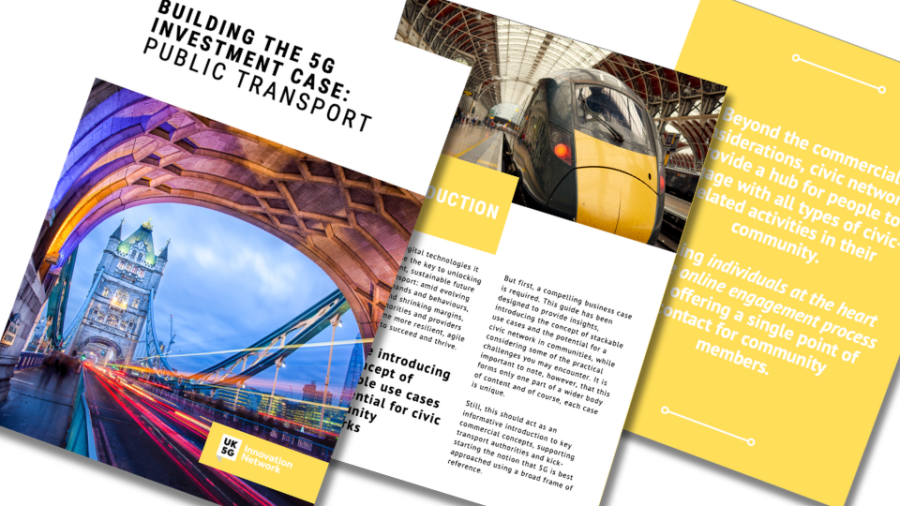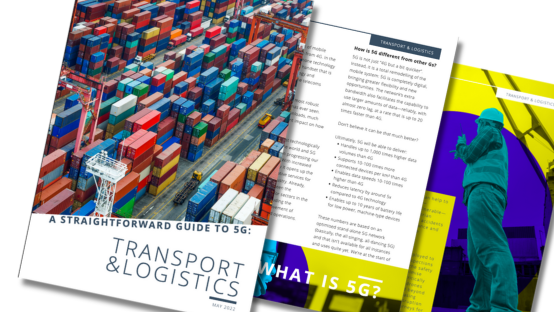
Be it by rail, road, sea, inland waterways, pipe or air, the transport and logistics sector is the linchpin that keeps the UK moving, physically and fiscally. In fact, as an island nation, the movement of goods – or logistics – is critical to our very existence, with the value of imports and exports worth £48bn and £51bn respectively. The movement of people – or transport – also racked up 873 billion passenger kilometres in 2019 alone according to the Department of Transport.
Of course, this figure plummeted in the wake of the pandemic. But with the sector’s steady return to pre-pandemic levels comes a considerable set of challenges. The transit of people and goods in a post-Covid, post-Brexit world is more complex than ever before, with evolving consumer demands and behaviours, rising costs and shrinking margins. All against the backdrop of the sector’s need to combat its status as the UK’s largest emitter of greenhouses gases prior to the pandemic.
Read more to discover some of the ways you can be better connected.
Benefits of 5G in Transport and Logistics
5G provides a layer of insight not previously possible, for smarter, more productive operations. Its high bandwidth capability enables a greater density of sensors, meaning more data – and with machine learning, greater and quicker insights and analysis. Monitoring occupancy levels on public transport facilitates dynamic scheduling, improving passenger experiences and optimising costs, while smart rerouting can minimise delays and optimise journeys. 5G also allows a far greater density of sensors, providing a granularity of insight that can be the difference between tracking a shipping container and tracking every item in the shipping container, taking the guesswork out of logistics.
In terms of infrastructure, 5G allows for the real-time collection of huge environmental data sets, powering digital twins that can simulate entire ports, airports, rail networks or potential changes to a transport network.
The Belfast 5G Innovation Region (5GIR) programme, led by Belfast City Council’s City Innovation Office, is harnessing 5G-led innovations to accelerate the digitisation of port operations including automatic bulk freight handling and safety improvements, aligning with their strategic ambition to become the world’s best regional Smart Port.
Northern Ireland’s public transport provider, Translink is using advanced wireless connectivity to enable enhanced operations and network planning along its Glider bus routes. This will further improve services, maximise and optimise resources and ensure the continued development of high-quality, sustainable and attractive Glider services.
Greenlight prioritisation, central to the Connected Intelligent Transport Systems project, has the potential to significantly improve regional and national public transport and import and export logistics between Nissan and the Port of Tyne. In addition, by reaching out to 5GIR sectoral counterparts in other regions, we have benefitted from exchanging information and sharing learnings (for example, the Port of Tyne and Port of Belfast).
5G’s increased bandwidth and reduced latency enables high-quality video monitoring, vehicle-to-everything (V2X) communications and real-time control of operations. Operators can better monitor vehicle and railway safety, intelligent control systems can redirect traffic in real-time away from traffic or hazards, advise on optimum speeds to reach green lights, and prioritise emergency services traffic and delivery vehicles.
V2X communications can also help to protect all road users – especially the most vulnerable – with cyclist and pedestrian alerts, notifications of accidents ahead, junction assistance and ultimately, cooperative manoeuvres between autonomous vehicles.
Drones can also be deployed to conduct vital safety inspections and checks to ensure the safety of passengers and minimise dangers to workers – increasing efficiency, reducing disruption and ensuring safer journeys for everyone, no matter your mode of transport.
The Sunderland 5G Innovation Region programme is utilising 5G-enabled port operations to improve port competitiveness and safety and reduce environmental impact. In addition, 5G will improve road transport efficiency for citizens and industry. Barney Smith, Programme Manager for the North East Combined Authority 5GIR, commented: “Green light prioritisation has the potential to significantly improve regional and national public transport and import and export logistics between Nissan and the Port of Tyne.”
More than any other sector, transport and logistics has a duty to reduce its environmental impact. 5G can play an important role, with its ability to power sensors and connected IoT devices that can monitor, calibrate and adapt transport systems. Intelligently controlling traffic to ensure vehicles aren’t held in queues and optimising freight routes can ease congestion and idling, helping to reduce CO2 produced by traffic jams. Similarly, predictive maintenance can ensure vehicles spend are kept in premium conditions, associated with less hydrocarbon, carbon monoxide and nitrogen oxides emissions. Remotely controlled drones for last mile deliveries could further reduce road miles and subsequent carbon emissions. Making public transport more efficient, more comfortable – and therefore more appealing – can further aid the easing of congestion across our towns and cities.
Greater Manchester’s Smart Decarbonisation Network, one of the 5G Innovation Region projects in the UK, focuses on tackling the drivers of climate breakdown at a city region level, accelerating decarbonisation, improving quality of life, and growing the Green Technologies and Services sector. Using 5G advanced wireless technology is central to this work, wrapped within an ecosystem delivered by industry and telecoms partners.
The project is ready to deploy on the ground and has dedicated a specific section of the programme to commercialisation. A 5G-enabled digital road network environment aims to reduce congestion, and carbon emissions through prioritising traffic flow, and support active travel modes and public transport movement – aligning with the GM Local Area Energy Plan while taking a citizen-centric approach.
In a digital-first world, with smart vehicles, cities and depots, 5G supports the volume of data that needs to be shared, at speed, between vehicles, rolling stock, ships, aircraft, infrastructure and people. In addition, while self-driving vehicles still require a human safety driver, the low latency and ultra-reliability of 5G allows for a single operator to manage multiple vehicles remotely, helping to tackle skills gaps and reduce costs. 5G also enables the experiences that passengers expect, powering digital technologies and providing information in a highly personalised, real-time manner over a reliable connection – improving accessibility, increasing passenger numbers and boosting confidence across multi-modal journeys in the process.
Transport and Logistics organisations need certainty that the networks and connectivity they deploy will maintain a stable and secure connection at all times. If data is compromised or lost, supply chains can very quickly become disrupted and delayed. It’s particularly important to ringfence mission-critical data flows in environments such as public transport, where members of the public or other users will be accessing the network. Network slicing allows these organisations to effectively preserve the passenger experience without jeopardising the quality or safety of a digitally-enabled transport service and its workers.
5G allows organisations to create a universal, flexible network across physical locations, rather than assorted networks and inconsistency or patchy connectivity. This makes it easier to manage networks holistically and grant access to third-parties in the case of remote maintenance, training or security. Compared to existing solutions, 5G also makes it easier to share data across multiple sites and organisations. This supports seamless collaboration and innovation, helping to close the skills gap in logistics management, and level up the UK’s transport and logistics sector as a whole.
It’s true that not all of these benefits are instantly accessible, but as 5G matures and innovation continues we expect to see these open up to the Transport & Logistics sector.
In London, all Elizabeth line stations now have 4G mobile coverage as the Mayor and TfL’s programme to improve connectivity for those travelling underground continues.
Paddington, Canary Wharf, Whitechapel and Woolwich stations all recently gained 4G mobile coverage - meaning that all Elizabeth line stations now have mobile coverage – from ticket halls all the way to the platforms. Work to deliver coverage within the tunnelled sections of the Elizabeth line continues, with the first sections between Bond Street and Liverpool Street expected to get coverage within the coming month, with the whole line completed later this year.
Providing uninterrupted mobile coverage provides additional reassurance to those travelling on the network, making it easier for customers to stay in touch with friends and family as well as allow staff to better provide information and better assist customers with their journeys. The system, delivered in partnership with Boldyn Networks, will also host the new Emergency Services Network (ESN), which when fully operational, will give first responders immediate access to life-saving data, images and information in live situations and emergencies on the frontline.
Explore the possibilities

Movement of People
How are we going to cater for transport growth? We cannot simply build more roads, tracks or runways. Engineering, innovation and of course, technology will be key
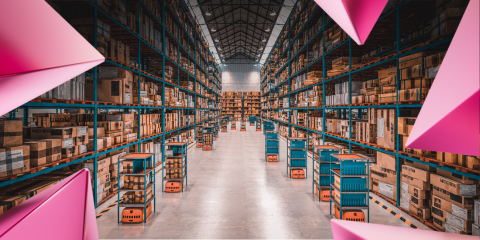
Movement of Goods
5G is here to provide an estimated $280Bn of benefits—digitalising processes, introducing autonomy and increasing accuracy, efficiency and worker safety
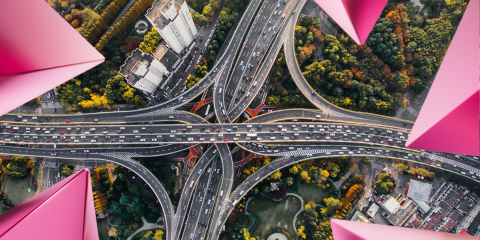
Infrastructure
5G and IoT offer an increased level of visibility into traffic infrastructure: quickly identify and resolve issues and shift towards a predictive maintenance model — reducing unexpected downtime, and unnecessary maintenance
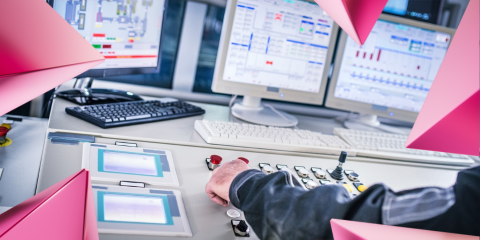
Operations
Operations can be managed dynamically in real-time, automatically prioritising emergency services, managing occupancy levels and rerouting of traffic to avoid incidents or better manage air pollution levels
The UKTIN Transport & Logistics Expert Working Group is a group of voluntary experts brought together to consider key opportunities to capitalise on the benefits of advanced connectivity across transport and logistics.
Our Supplier Directory introduces you to find a range of organisations who can help you design and deliver connectivity solutions, including those who specialise in working with manufacturers.

